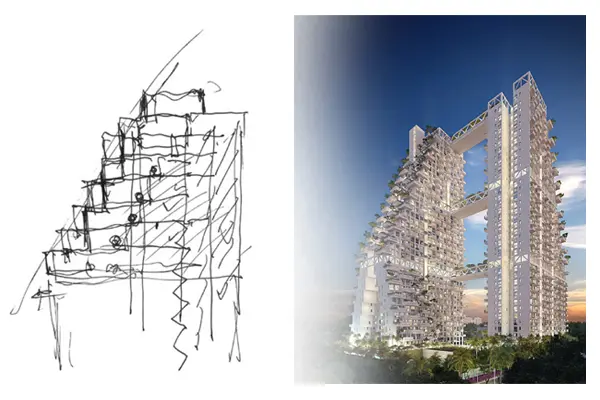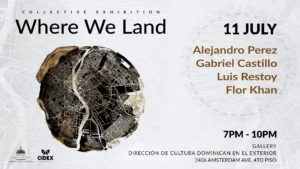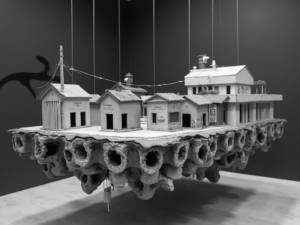Nearly six months ago, I received an invitation to immerse myself in the world of the renowned architect Moshe Safdie, a chance that came thanks to my friend Yinette, who was part of Safdie’s team for 11 years. The visit to his studio in Somerville exceeded all my expectations and allowed me to experience firsthand the creative environment where some of the world’s most innovative architectural projects are conceived.

Safdie’s studio is a space where tradition and modernity merge. Unlike many of his contemporaries, Safdie maintains a traditional approach, working by hand and using impressionistic sketches that his collaborators understand perfectly. The meticulous attention to detail and deep commitment to his craft are evident in every corner of the studio.
At the studio, I had the opportunity to see a substantial book compiling all of the architect’s work. This monograph not only documents his current projects but also offers a vision of his conception of future architecture, highlighting his ability to anticipate urban and housing needs.
Biography of Moshe Safdie
Moshe Safdie, born in Haifa on July 14, 1938, is an Israeli-Canadian architect known for his innovative projects. Among his most iconic works are Habitat 67 in Montreal and Marina Bay Sands in Singapore.
Safdie was born into a Syrian Jewish family from Aleppo and moved to Canada with his parents in 1953, when he was 15 years old. He studied architecture at McGill University in Montreal, where he presented his thesis titled A Case for City Living, which proposed a system of three-dimensional modular buildings. He graduated in 1961.

At the age of 23, while working as a protégé of Louis Kahn in Philadelphia, Safdie was invited by his thesis advisor, Sandy van Ginkel, to develop his project for the 1967 World’s Fair in Montreal. The result was the groundbreaking modular complex known as Habitat 67.
In 1964, Safdie founded his studio in Canada and, in 1970, opened an office in Jerusalem. Among his notable projects are the new terminal at Ben Gurion International Airport, the Yad Vashem Holocaust Museum, the renovation of the Mamilla neighborhood in Jerusalem, and Marina Bay Sands in Singapore.
In 2011, Safdie designed the Serena del Mar Hospital Center in Cartagena de Indias, Colombia, and in 2018, he presented his second design in South America with the Qorner building in Quito, Ecuador, promoted by Uribe Schwarzkopf. His innovative approach and commitment to sustainable urban development have been recognized, contributing to Uribe Schwarzkopf receiving the Energy Globe Award.

The visit to Moshe Safdie’s studio was an inspiring experience that revealed not only the creative process behind his iconic works but also the passion and dedication that define his career.









